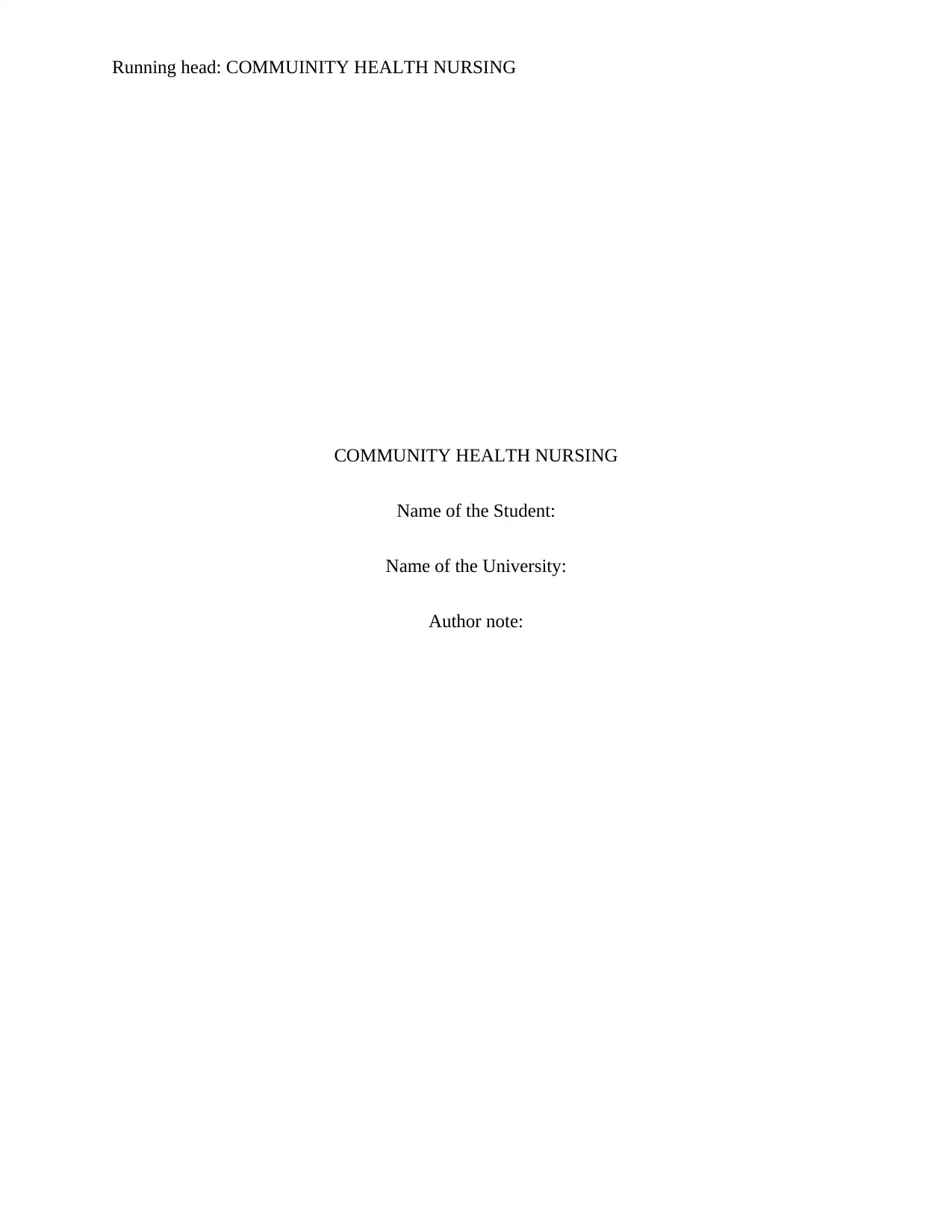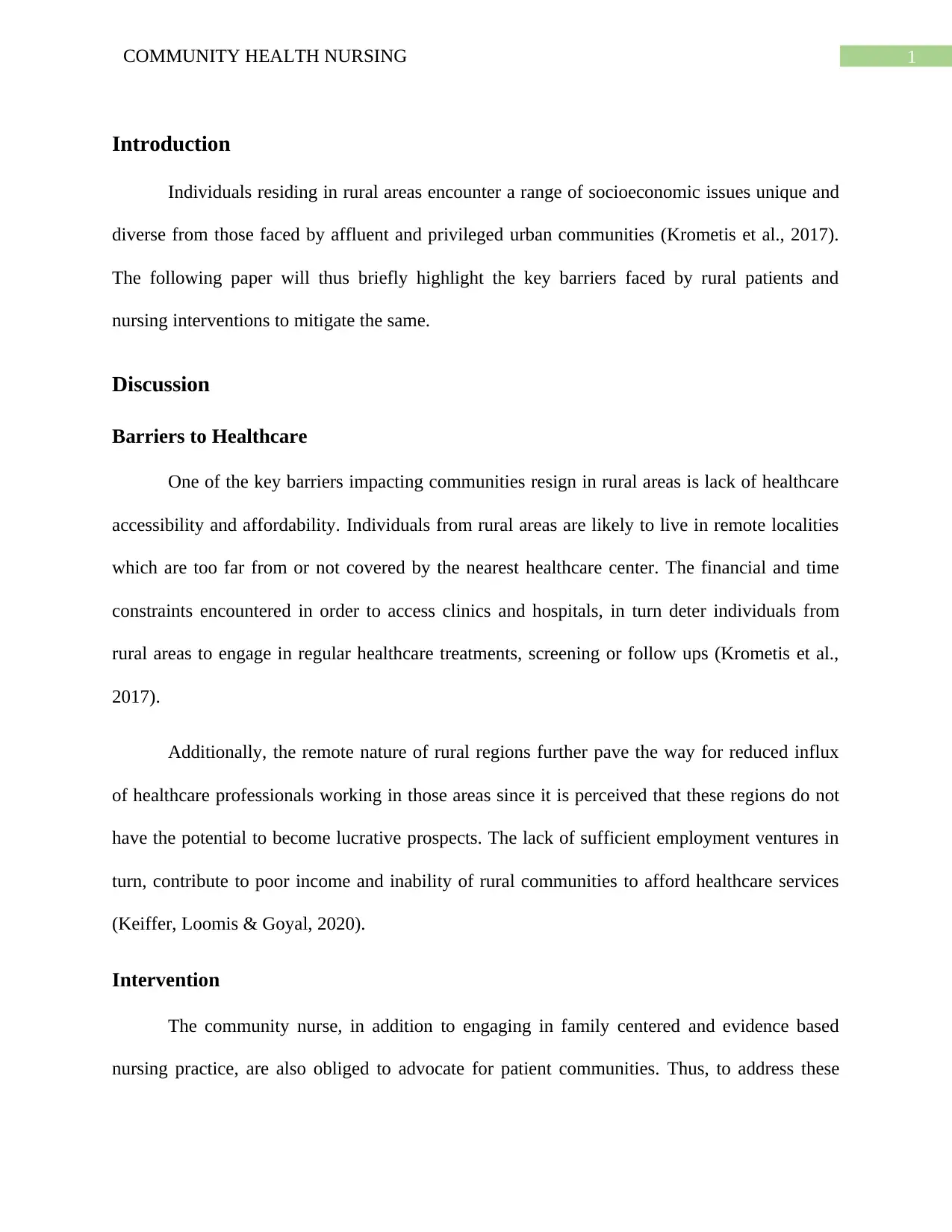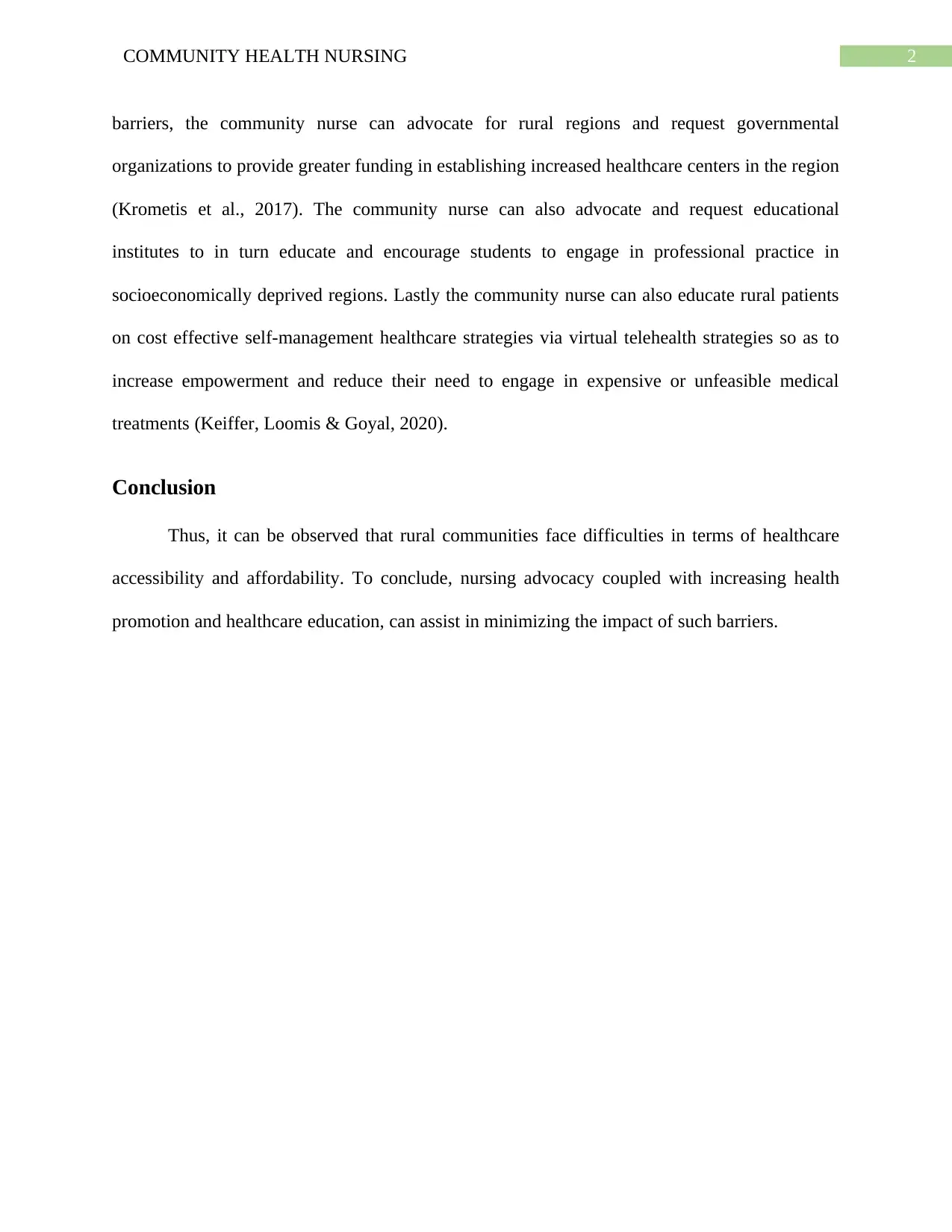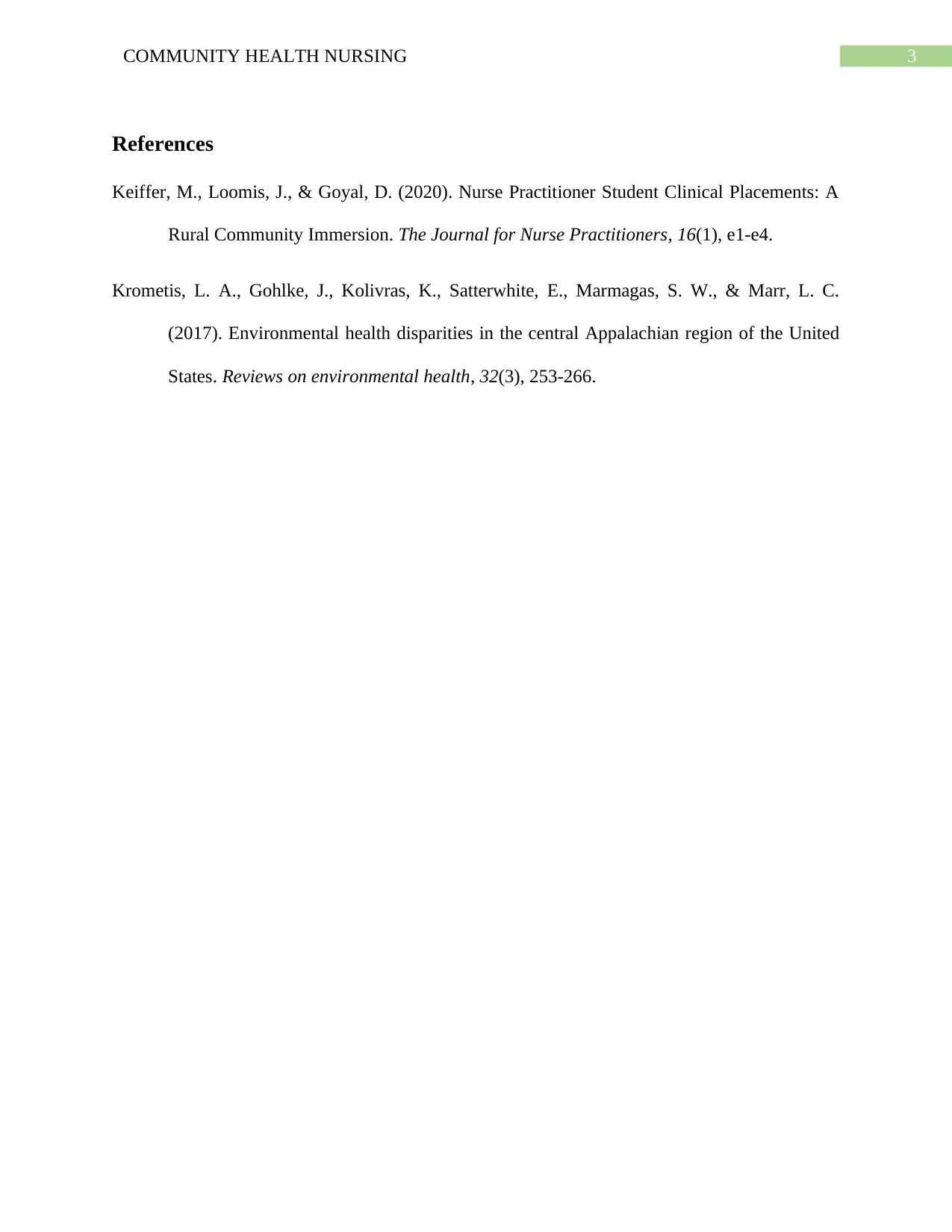Community Health Nursing Report: Addressing Rural Healthcare Barriers
VerifiedAdded on 2022/08/16
|4
|523
|26
Report
AI Summary
This report examines the challenges faced by rural communities in accessing and affording healthcare, highlighting the crucial role of community health nurses. The report identifies key barriers such as limited healthcare accessibility and financial constraints, often exacerbated by the remote nature of rural regions. It then proposes nursing interventions, including advocating for increased healthcare funding and educational initiatives. Furthermore, the report emphasizes the importance of promoting cost-effective self-management strategies, such as telehealth, to empower patients and reduce reliance on expensive medical treatments. The conclusion underscores the significance of nursing advocacy and health promotion in mitigating these barriers, ultimately improving healthcare outcomes for rural populations. This assignment is available on Desklib, a platform providing AI-based study tools.
1 out of 4










![[object Object]](/_next/static/media/star-bottom.7253800d.svg)